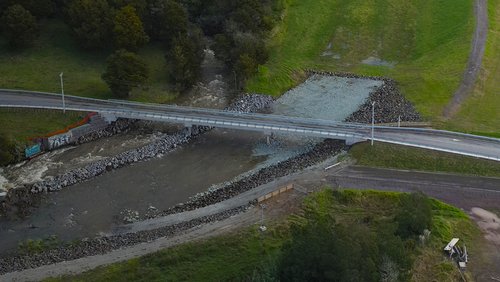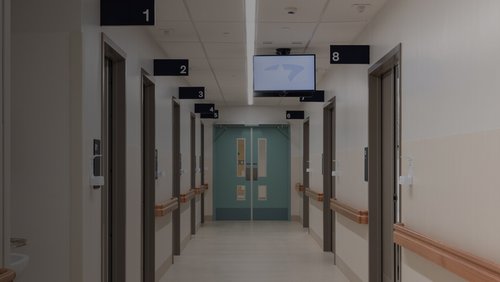13 Mar 2024
The Pike29 Memorial Track commemorates the lives lost in the tragic mine explosion, and has been designed with people, and sustainability, at its heart.
The 2010 Pike River mine explosion is one of Aotearoa’s most devastating disasters. In honour of the 29 men who died in the tragedy, the Pike29 Memorial Track has been built, opening in February.
It connects the Pike River valley to the Paparoa Track, the first shared-use Great Walk constructed by the Department of Conservation (DOC) that caters to both hikers and mountain bikers. Rising 880m from the Pike River valley floor, the Pike29 Memorial Track winds through the top of the Paparoa Range ridgeline. As bikers and hikers weave their way, they’ll encounter rest stops with display panels introducing the story of the mine disaster, and a viewing point that looks down on the vent shaft in the mine site.
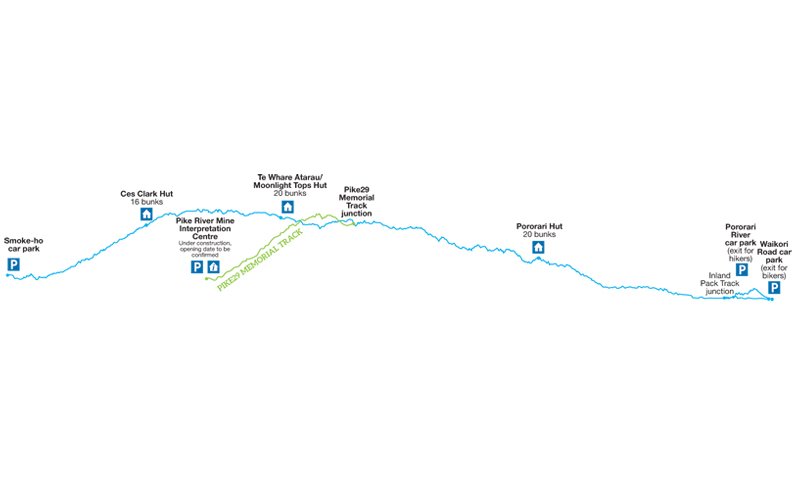
Elevation profile and track guide. Adapted from Department of Conservation.
Central to the track’s construction were the Pike29 victims’ families, who first proposed the idea. “They wanted to see an economic opportunity return to the West Coast to offset the downturn in the extractive industries, but also to thank the regional community for the support they’ve given in the wake of the disaster,” says Tom Hopkins MEngNZ, a previous strategic projects manager for the Pike River Mine Transition Project.
He adds that, facilitated by DOC, the families also consulted the Ngāti Waewae hapū, the kaitiaki of the Paparoa National Park, who supported the proposal. “We ended up with an agreement about where Ngāti Waewae would tell their stories and where the Pike29 families would tell their stories. It was a healing path for the families and a way for Ngāti Waewae to reassert their status as mana whenua at Paparoa.”
It was a healing path for the families and a way for Ngāti Waewae to reassert their status as mana whenua at Paparoa.
Building the 11.6-kilometre track was no easy feat. The team had to contend with the remote location, rugged terrain and rough weather.
“It’s like building a new road — but on steroids,” Tom says.
To overcome those challenges, the team applied civil engineering best practices during the initial stages, including the use of GPS and Lidar for surveying and planning, as well as employing digital tools for terrain modelling and track design. Safety was paramount, so the team carried out a geological hazard assessment to determine the risk levels for workers building the track, staff maintaining it in the future, and the track itself over the long term.
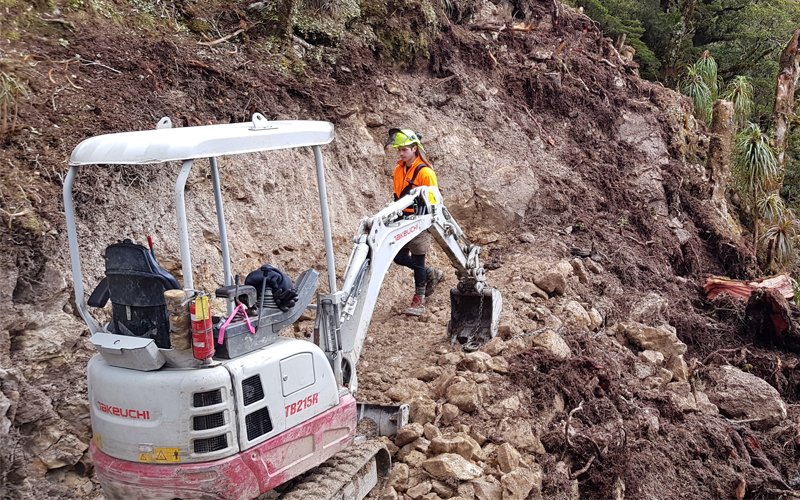
Logan Blythen from Nelmac removes treet stumps while working towards the junction with the Paparoa Track. Photo: Mark Nelson
Ensuring safety for hikers and bikers entailed creating good sight lines, avoiding steep and long straight sections, and providing good drainage. “When you have bikes descending, they can go fast, so we made sure the track has lots of wiggles and ups and downs, which slows people down,” says Hamish Seaton MEngNZ, an electrical engineer and expert track builder who designed the Pike29 Memorial Track.
“But it also makes it more fun to ride and manages the water better.”
Sustainability was another key consideration. The goal was to minimise the building footprint and damage from the track, as well as to disturb the least amount of trees and vegetation.
“A lot of the materials required for the track were sourced on-site,” Hamish says. “If we needed to fell a tree that’s in the way, the wood from the tree was used to make corduroy to go underneath the track. If we needed rock to surface the track, we could often take that from areas close to the track.”
The project was a team effort, and Tom attributes its success to the myriad people involved: DOC staff, Stantec as engineering consultants, Nelmac as contractors, plus the construction crews.
“They’ve done an incredible job of implementing the vision of the families, DOC and Ngāti Waewae.”
Hamish echoes this sentiment: “You go from pristine bush to a messy worksite, and then as the crews wrap up the track and rehabilitate the area, you’d hardly know that anything else had been disturbed. It looks like it’s been there for many years.” He adds, “It’s been a privilege to be involved with a once-in-a-lifetime project like this. Everybody can be proud of what we’ve achieved. The big satisfaction will be in the sheer number of people that can now get in there and enjoy it.”
You go from pristine bush to a messy worksite, and then as the crews wrap up the track and rehabilitate the area, you’d hardly know that anything else had been disturbed.
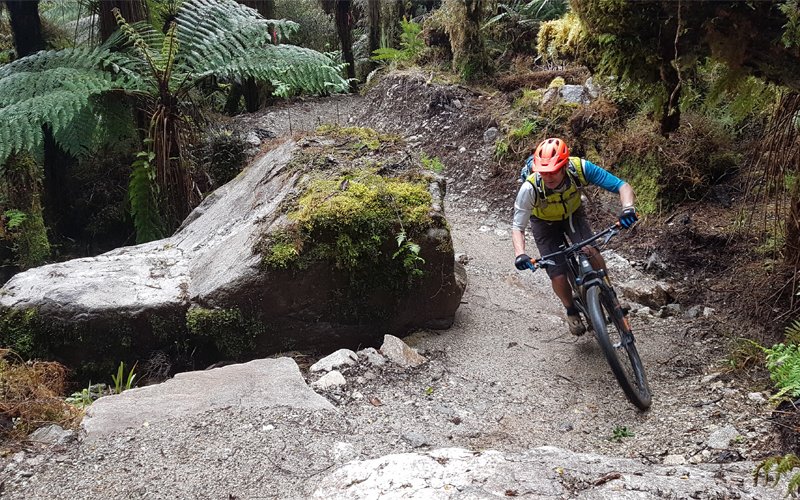
Guy Wynn-Williams rides past one of the feature rocks. Photo: Hamish Seaton
For Andy Evans, Business Development Manager at Nelmac, being part of the project was an “opportunity to create an enduring memorial for the 29 workers lost in the Pike Mine disaster and build an amazing track asset for the West Coast region and the country, which will prove to be a major attraction for outdoor enthusiasts, boosting economic growth opportunities for the Coast for decades".
The team’s engineering approach with both the Paparoa Track and the Pike29 Memorial Track was “very much about trying to achieve the best possible experience for the end users, but doing it in a respectful way — respectful of the environment, the families and the local hapū”, says Tom.
“There was care taken in building the track and I hope people will be impressed by the quality of the outcome.”
This article was first published in the March 2024 issue of EG magazine.

